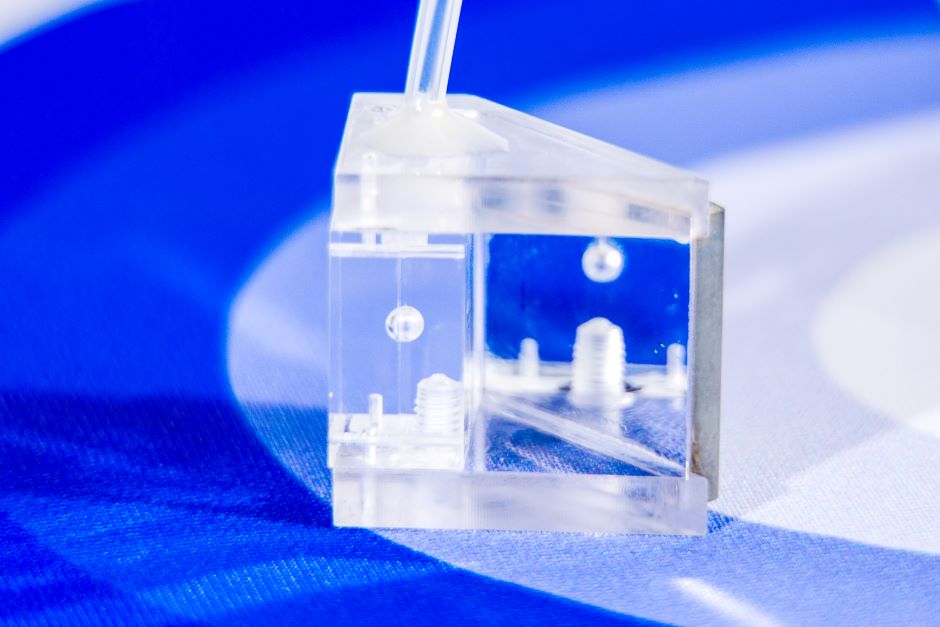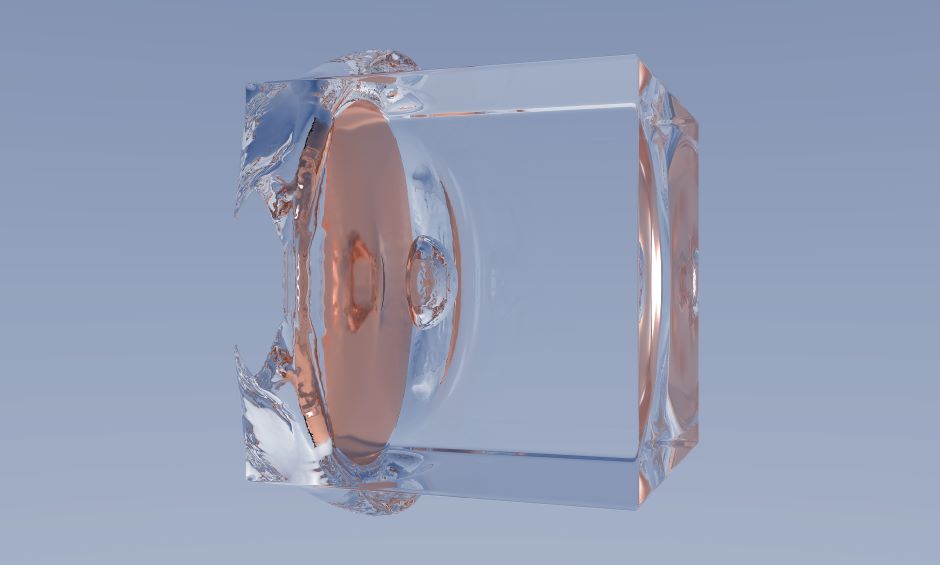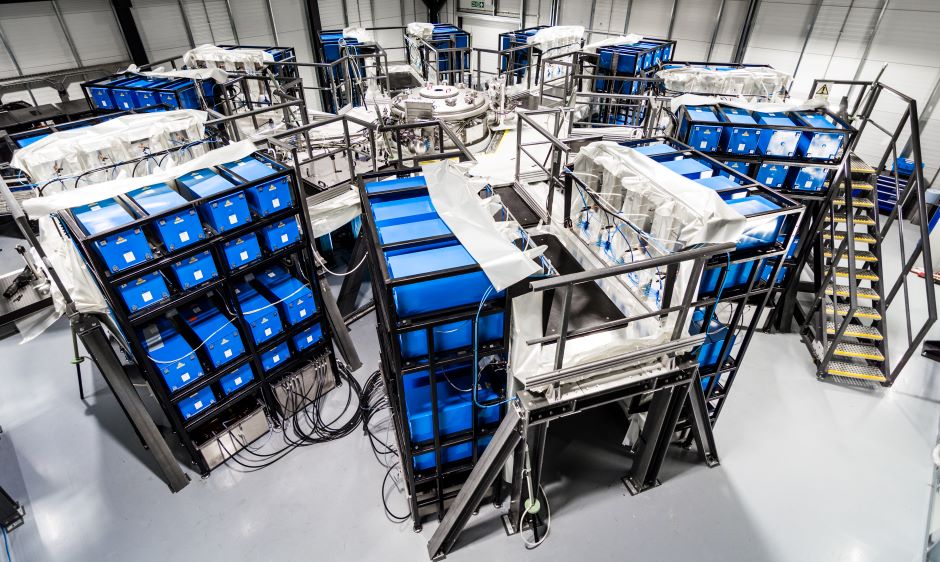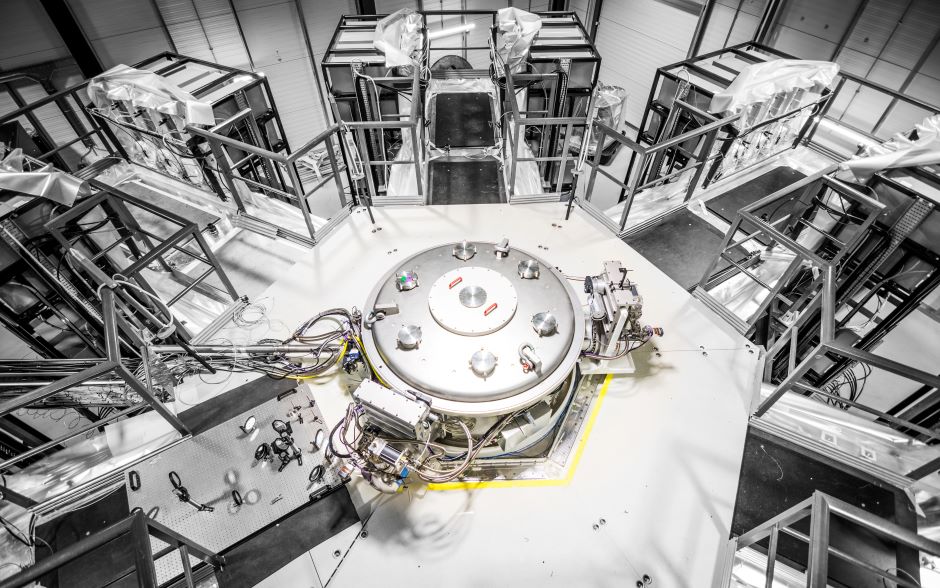
Only millimetres in length, these crustacea are fearsome hunters, marvels of evolution and possessed of the nearest thing we know to superpowers. They are the only creatures apart from humans that kill their prey from a distance, but they don’t need to rely on weapons.
Instead, the pistol shrimp sports one outsize claw which it can snap (almost exactly like snapping fingers) to generate a shockwave that can stun or kill even much larger animals, including fish.
This unlikely ability makes this tiny animal the loudest creature on the planet, louder even than sperm whales (whose entire cranial anatomy has evolved to produce high energy sonar clicks) and beluga whales, the opera singers of the seas. Pistol shrimp are so loud that they interfere with submarine navigation.
Studying pistol shrimp led Dr Nick Hawker (above), a speaker at the recent The Engineer conference, which ran alongside the Subcon exhibition at the National Exhibition Centre in June, to what might seem to be the unintuitive conclusion that this marvellous oddity might be the answer to humanity’s biggest current challenge: ensuring the supply of the electricity on which our lifestyles depend without further damaging the planet’s ability to support human life. Hawker is developing a technological theory that might be the key to nuclear fusion: the time-worn but keenly chased goal of near unlimited energy with little to no pollution drawbacks by recreating the process that powers the sun.
Energy on a big scale
There are many routes to fusion, but the most studied revolve around creating almost inconceivably high temperatures in volumes of electrically charged gas (plasma) and squeezing them in titanic magnetic fields inside enormous machines – this is known as magnetic confinement fusion. The Engineer has covered this in detail in several features about the France-based project ITER, in which 35 countries are collaborating to build the largest ever magnetic confinement fusion reactor.
Although significant progress has been made towards producing fusion by magnetic confinement, it has not yet succeeded in demonstrating gain – that is, producing more energy than it takes to trigger fusion.
Hawker is taking a completely different route, known as inertial confinement. This centres around triggering fusion by physically crushing a bubble of plasma. And this is where the pistol shrimp comes in. The shockwave with which it hunts is accompanied by collapsing bubbles: when it clicks its claw, the moving digit rips through the water so quickly that it causes a pressure drop in its wake that vaporises water, creating bubbles – a process known as cavitation, which also occurs in the wake of rotating propeller blades. The shockwave generated by the claw causes the bubbles to implode, raising their internal temperature so high that they generate light. This is the only known example of inertial confinement in the universe, apart from in stars as they collapse into a supernova. Intertial confinement is also being pursued by the National Ignition Facility in California, but they use powerful lasers to trigger bubble collapse.

Collapsing bubbles has been a known possible source of nuclear fusion for some time. In the early 2000s, an engineer at Purdue University in the US claims to have generated fusion by collapsing bubbles in liquid through bombarding them with ultrasound: a technique that became known as sonofusion. However, the results of experiments could not be replicated and he was charged with misconduct.

Sonofusion is not the path pursued by Hawker’s company, Oxford-based First Light Fusion, he told The Engineer.
“Sonofusion is complex – the ultrasound that vibrates the bubble to make it implode and that’s not a stable or predictable process,” he explained. “The conditions that could cause it have been mapped pretty well and there is only a very small set of conditions where fusion is possible.” Rather than using ultrasound, First Light follows the pistol shrimp example, creating a powerful shockwave to force a bubble to implode. That shockwave is produced by firing a projectile into a target that contains a small void or voids filled with fusion fuel; the impact mimics the shrimp’s clicking of one part of its claw against the other.
The crucial condition to raise the pressure (and hence the temperature) inside the void high enough to initiate fusion is the velocity of the projectile when it hits the target, Hawker said. “To be honest, we’re talking about brute force.” The velocity of the projectile directly maps to the speed of the implosion, which controls whether the contents of the bubble reach fusion temperatures (around 50 million°C).
For example, the National Ignition Facility (NIF) in California, the largest experiment into inertial confinement fusion in the world, is using powerful lasers to trigger an explosive implosion of a capsule of fusion fuel at around 350km/s – compared with around 5km/s for most sonofusion experiments.
“If you keep turning up the shock strength, which correlates to both the internal pressure of the bubble and the velocity of implosion, can you eventually get the same conditions present at NIF? And the answer in my research was yes, you can,” Hawker explained.

One complicating factor is that with projectile-triggered implosion, the shockwave hits the bubble on one side and the collapse is planar, which is very different from the situation at NIF, where lasers hit capsules from all sides simultaneously and the implosion is symmetrical. One way to tackle this problem, Hawker said, is with the geometry of the target.
The display target model that Hawker shows when explaining his process is a transparent Perspex cube with a single bubble in its centre, with inlet tubes on either side through which fuel would be introduced. “But the actual thing won’t be one spherical cavity by itself, it’ll be something more complicated,” Hawker said.
One demonstration that Hawker shows features two spherical bubbles side-by-side. Tucked into the space where two edges approach each other is a single, much smaller spherical bubble. In this simulation, when the planar shockwave approaches from the opposite side of the two bubbles from where the small bubble is located, the large bubbles collapse and turn inside out and this collapse envelops the small bubble.

“We call this convergence, and it’s crucial to getting the correct geometry of implosion,” Hawker said. “The target itself could be made from any solid material, in theory. You hit it so hard with the projectile that it behaves like liquid.”
The projectile is accelerated using an electromagnetic launcher device which makes up the bulk of the fusion machine. If magnetic confinement is characterised by enormous magnets, and the NIF’s inertial fusion by enormous lasers, then First Light is characterised by banks of capacitors which act like a camera flash, storing a huge amount of electric charge released in an instant to generate a magnetic field of 500 to 1,000 Tesla, which launches the projectile at around twice the escape velocity (some 22km/s, which is about Mach 66). This is still nowhere near the implosion velocities achieved at NIF, which is why the target design is so crucial, Hawker explained.
High-velocity implosion
Although the shockwave travels inside the target material faster than the projectile velocity, the geometry and arrangement of the fusion fuel containing bubbles inside the target acts to concentrate the force and increase the velocity of implosion. “If you can get the target bubbles up to about 5keV, you start to trigger fusion and it self-heats, it’s an incredibly non-linear process and will rocket up to millions of keV in a few picoseconds. That will burn a much larger fraction of the fusion fuel than a magnetic confinement reactor will,” Hawker said.
First Light plans to prove it can achieve fusion with its existing machine using deuterium fuel alone. Its next stage, for which it will need to raise a substantial amount of money, will involve building a machine some 40 times larger to demonstrate energy gain. At this stage First Light will also design features to capture the energy of fusion.
Hawker explained that the current idea is to use a liquid lithium coolant in a pool below the target with a cascading cylindrical curtain of liquid lithium falling around the sides, so all the energy emitted apart from that which is going straight upwards will be intercepted by the liquid metal. Fast neutrons emitted by the fusion reaction will collide with lithium atoms in the coolant to generate tritium, the heavier isotope of hydrogen which is the other component of “standard” fusion fuel.
“Liquid metal coolant has been used extensively in fast breeder reactors, notably at Dounreay in Scotland,” Hawker said. “They tend to use sodium or an alloy of sodium and potassium, and liquid lithium is slightly different chemically but behaves in the same way physically, so we can use the expertise gained in these reactors to design our system. We can also put the coolant through a similar type of heat exchange system that the breeder reactors used to use the fusion energy to raise steam and generate electricity.
“In essence, what we are talking about is a plant that could be built by any company with experience of fabricating large components. If you can make a nuclear reactor, you can make one of our plants. In fact, if you can make a gas-fired power station, you would be able to make one of ours as well.”




Swiss geoengineering start-up targets methane removal
No mention whatsoever about the effect of increased methane levels/iron chloride in the ocean on the pH and chemical properties of the ocean - are we...